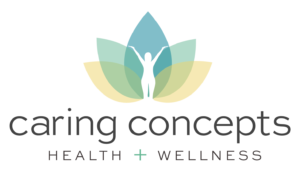An Ounce of Prevention
Maintaining good health is more than occasionally seeking out your healthcare provider in the face of a cold or an ache or pain here and there. Disease prevention starts with staying on top of annual screenings and knowing what screenings are needed throughout the lifespan. However, I do recognize that staying on top of this list can at times be exhausting; even for your provider! As research evolves, we occasionally see requirements for screening tests change over the years.
I remember when I first started classes towards my nurse practitioner certification almost 10 years ago, it was recommended that all females who are sexually active get a Pap Smear screening for cervical cancer. Now, over a decade later, those guidelines have significantly changed. One of the reasons these guidelines changed is because the type and quality of testing that is offered for cervical screenings has evolved for the better and clinical research has shown that it is more efficacious to start screening later. It is important for you to ensure that your provider stays up to date on evidence-based changes in screening guidelines so that you are receiving care that is based on the latest evidence. It is also important for me to mention that there are many different guideline authorities that offer timelines for screening and in many cases they have varying timelines.
As long as your provider’s decisions are based on solid guidelines and up-to-date evidence you are in good hands regardless of which clinical practice guideline your provider follows. For example, when it comes to women’s health screenings the big three clinical practice organizations are The American Cancer Society (ACS), American College of Obstetrics and Gynecology (ACOG), and United States Preventative Services Task Force (USPSTF). The ACS does not recommend clinical (provider) breast exams whereas ACOG states that it “may be offered every 1-3 years for women aged 25-39 and annually for women 40 and older.” Furthermore, when it comes to mammography initiation age there is also varying opinions. ACOG and USPSTF state that screening should be offered at age 40 but recommended by no later than 50 if the patient has not already initiated. What this means is that a provider who ascribes to the ACOG or USPSTF clinical guidelines would be well within their scope to wait until a patient is 50 to start mammography if the patient wishes. On the other hand, a provider who ascribes to ACS guidelines would likely offer at ages 40-45 but recommend starting at age 45 vs 50 with the previously mentioned organizations. Here are the guidelines that I follow when it comes to common screenings:
Colorectal Cancer
Initiate: start at age 45 and continue through 75
Frequency:
- Stool based fecal occult testing → every 3 years OR
- Colonoscopy → every 10 years OR
- CT colonography every 5 years OR
- Flexible sigmoidoscopy every 5 years
Discontinue: after age 75
(USPSTF recommendations)
Total Cholesterol
Initiate: start at age 20
Frequency: Every 5 years unless cholesterol is > 200mg/dl for patients aged 20-59
Every 2-3 years unless cholesterol is >200mg/dl for patients aged 60 and over
(USPSTF recommendations)
Pap Smear
Initiate: Age 21
Frequency:
- Age 21-29
- Every 3 years (more frequent monitoring may be required if test is abnormal)
- Age >30
- Pap and HPV testing every 5 years (Preferred) OR
- Pap test every 3 years
Discontinue: age 65 OR after hysterectomy WITH cervix removal if for benign (noncancerous) reason such as fibroids.
(ACOG recommendations)
Of course, these are standard screening guidelines and they may vary depending on each patient’s unique health history and circumstances but this is always my starting point. Your primary care provider is your resource for helping you stay on top of your annual screenings. I hope this was helpful and if you are in need of lab work or an order for a screening test we can assist!


